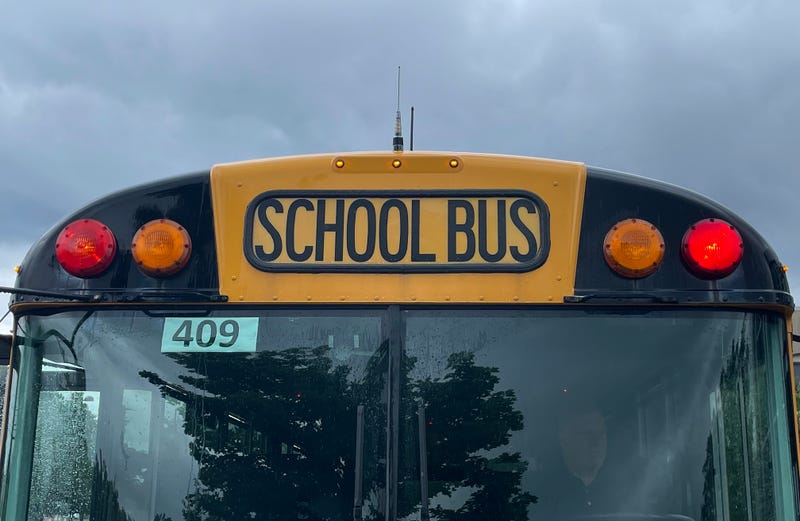
Albany, N.Y. (WBEN) - Republican lawmakers in Albany were joined by officials from New York’s education community on Monday to call on Gov. Kathy Hochul and the Democratic majorities to pause the 2027 statewide implementation of the electric school bus mandate to allow for the completion of a pilot program, cost-benefit analysis and other feasibility assessments.
Local State Sen. George Borrello was among those voicing their opposition to the mandate, saying the requirements won't work for many school districts across the state.
"As the 2027 implementation date of New York’s electric bus mandate approaches, school officials in my district and around the state are becoming increasingly concerned about the tremendous financial and operational challenges associated with this one-size-fits-all requirement,” said Sen. Borrello on Monday.
The electric school bus mandate, enacted in 2022, requires new school bus purchases to be zero emission by 2027 and all school buses in operation to be electric by 2035.
There is no provision made for the geographical disparities, diverse weather conditions or unique travel demands of the state’s school districts. In addition, this is another mandate from Albany that burdens cash strapped school districts and taxpayers.
"This mandated conversion will have a price tag in the billions, with New York State taxpayers simply expected to foot the bill," Sen. Borrello said. "Like so much of the state’s climate agenda, there is no cost-benefit analysis of this mandate or any realistic plan for how to pay for it."
"Electric buses cost up to three times as much as conventional buses -- it’s a difference of $130,000 versus $400,000-$450,000. Additionally, electrical infrastructure and distribution line upgrades can add hundreds of thousands of dollars or more. The conversion cost has been conservatively estimated at between $8 billion and $15.25 billion more than the cost of replacing them with new diesel buses. However, the multi-million dollar estimates utilities are now providing to some school districts just for the electrical upgrades suggests the total costs will be much higher than $15 billion."
State Assemblyman Phil Palmesano noted the state allocated just $500 million in the most recent Environmental Bond Act to assist schools with the conversion costs of the state’s 50,000 buses.
Assemblyman Palmesano and Sen. Thomas O’Mara are sponsoring legislation that would, among other things, require the Commissioner of Education to complete a cost-benefit analysis for each school district that takes into account the costs necessary to comply with the zero-emission school bus mandate.
Legislators cited other problems associated with electric vehicles that are gaining increasing attention and adding to concerns about investing taxpayer funds in the conversion. Those problems include:
Inability to operate or charge in frigid temperatures:
As a well-publicized incident in Chicago in mid-January underscored. Designed to operate best in 70-degree temperatures, electric vehicles lose up to 40% of their traveling range in extreme cold and the time required to charge them is much longer. A pilot program in Vermont found traveling range decreased by 80% in some instances;
Poor reliability:
School districts engaged in pilot programs and agencies operating municipal buses have reported many electric buses are “gathering dust” in bus garages as a result of numerous mechanical problems and hard to access parts and technical support. A study by Consumer Reports found that electric vehicles have 80% more problems than conventional vehicles.
"While many states around the nation are wisely testing the feasibility of electric buses for their regions through pilot programs, New York Democrats rushed to enact a mandate without any firsthand data on whether it would meet the needs of our districts. This is a movie we’ve seen before in Albany and it never ends well," Sen. Borrello added.
Borrello noted he is proposing legislation (Senate Bill 8467) that would rescind the mandate and replace it with a state-funded pilot program that would allow schools to test how these buses perform. A condition of the pilot program is that buses be sited in all three types of settings, rural, urban and suburban, so that their performance can be evaluated. At the end of one year, a report on the program would be presented to the executive and legislature.
